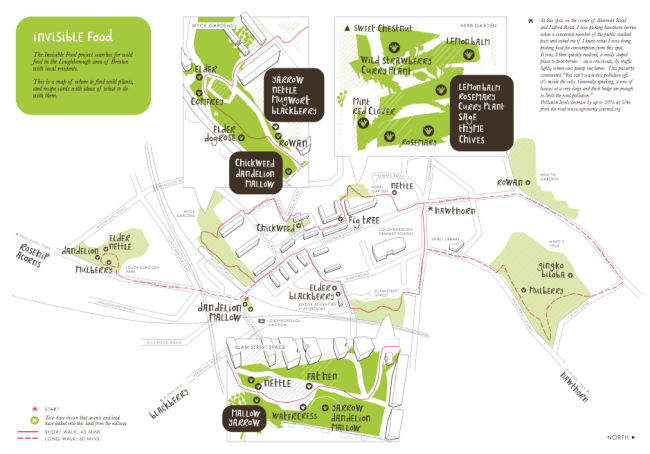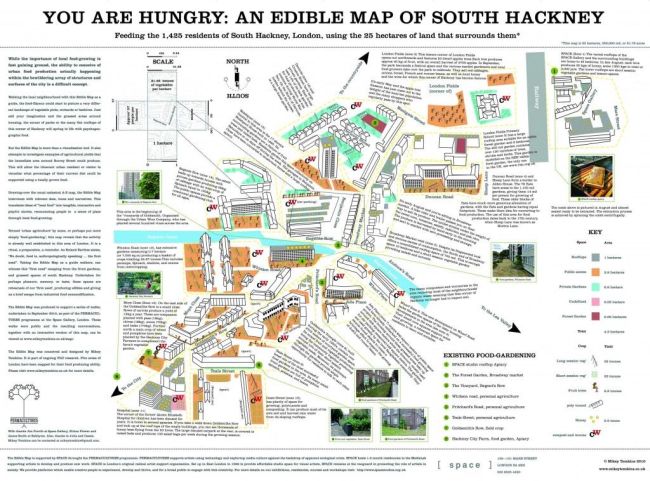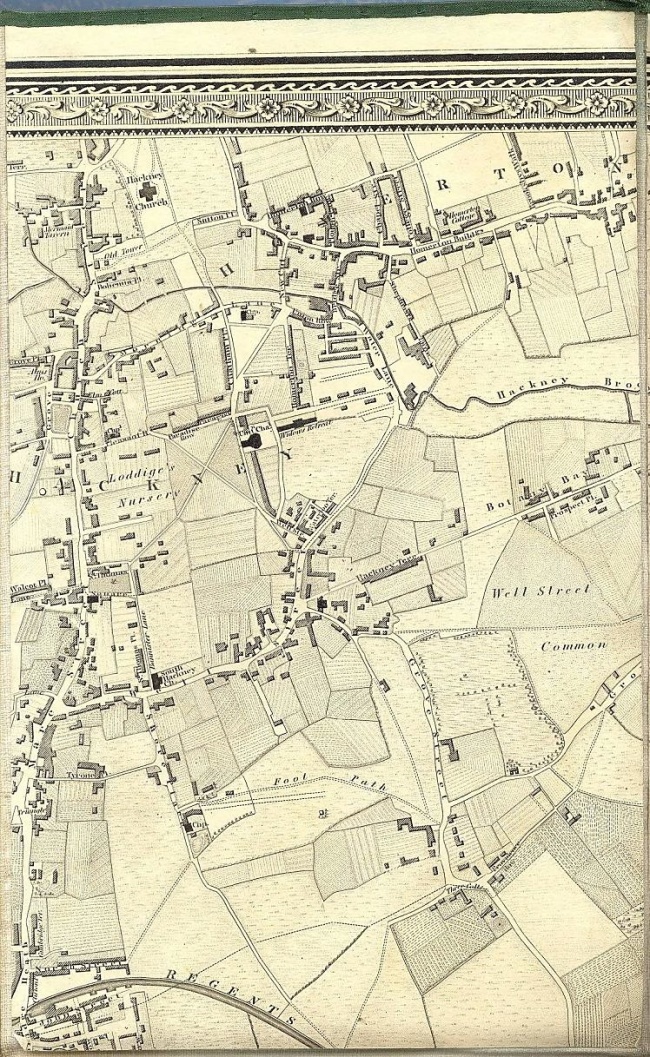I’m a big fan of maps, and I’m lucky to be married(ish) to someone who draws them for a living. Reda has taught me much about the medium’s potential for analysis and presentation and together we are always on the look out for innovative ways of representing space and the information it holds.
With sustainable living and food growing being the issues “du jour”, there seems to be no end to the out pour of creativity which merges design and all things “green”, or which begs us to re-imagine the landscape we inhabit. The maps below are an assortment of some of my favourites.
 Artist Ceri Buck’s Invisible Food map was commissioned and produced by Artangel Interaction with support from the National Lottery. It details the location of wild food growing on the Loughborough Estate in Brixton, South London.
Artist Ceri Buck’s Invisible Food map was commissioned and produced by Artangel Interaction with support from the National Lottery. It details the location of wild food growing on the Loughborough Estate in Brixton, South London.

Mikey Tomkins draws our attention to the vast amount of unused, potential food growing space in his “Edible Map of South Hackney”. Click here for the proper, interactive version.

These hand-coloured images were produced back in 2009 for the Commission for Architecture and the Built Environment (Cabe). Concrete, tarmac, cement and brick have been removed, leaving only the green – gardens, parks and waterways.


Stephen Walter‘s hand drawn maps are possibly the best thing I’ve seen in recent years. The Island (2008), 140cm x 200cm, depicts the 33 London boroughs as a collection of supermarkets, pubs, CCTV cameras, clichés, secret goings on and hidden gems. It’s the kind of piece which will always offer something new, however many times you’ve seen it, and I urge you to explore it in full here.

Global meat imports

Global meat exports

Global fruit imports

Global fruit exports
worldmapper features nearly 700 maps, re-sized to present a range of startling information on subjects ranging from house prices to voting rights.
And finally…

This map of Hackney and Homerton from 1827 shows St. John’s Church, Well Street Common, the odd building and a whole load of fields. Morning Lane, Homerton Row and Paradise Row are unchanged, while Grove Road seems to have shifted South before it replaced Grove Street.





